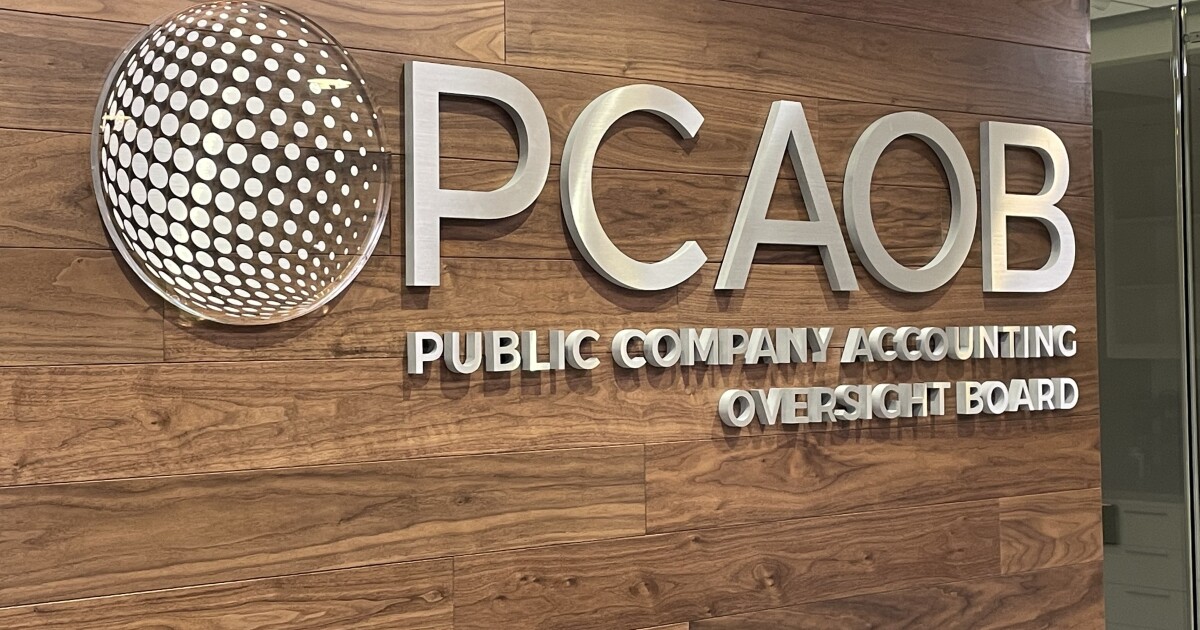The Public Company Accounting Oversight Board released inspection reports for all 2023 annually inspected firms Thursday, including the six U.S. Global Network Firms.
The timing came months before the reports have been released in recent years thanks to ongoing efforts to accelerate the release of reports.
The PCAOB inspection reports came accompanied by a new staff Spotlight publication, offering an overview of staff observations from the 2023 inspections. Staff observations include the fact that while overall deficiency rates continued to increase in the aggregate, with 46% of the engagements reviewed having at least one Part I.A deficiency, “we have begun to see the aggregate deficiency rate at the Big Four firms level off, as well as improvements in the deficiency rates at several of the other annually-inspected firms.” The Spotlight report also explores how outliers influence the overall average, among other observations.
For example, the report on BDO USA seems to stand out with an 86% Part I.A audit deficiency rate. Twenty-five of the 29 audits reviewed by the PCAOB in 2023 were included in Part I.A of the report due to the significance of the deficiencies identified. The identified deficiencies primarily related to the firm’s testing of controls over and/or substantive testing of revenue and related accounts, inventory, and business combinations.
Grant Thornton had a 54% Part I.A deficiency rate. Fifteen of the 28 audits reviewed by the PCAOB in 2023 were included in Part I.A of this report due to the significance of the deficiencies identified. The identified deficiencies primarily related to the firm’s testing of controls over and/or substantive testing of revenue and related accounts and inventory.
Among the Big Four, for Deloitte & Touche LLP, 12 of the 56 audits reviewed by the PCAOB in 2023 were included in Part I.A of the report due to the significance of the deficiencies identified. The identified deficiencies primarily related to the firm’s testing of controls over and/or substantive testing of revenue, inventory, investment securities, insurance-related liabilities, and allowance for credit losses/allowance for loan losses. That translated into a 21% Part I.A audit deficiency rate.
At PricewaterhouseCoopers LLP, the Part I.A deficiency rate was the lowest among the Big Four at 18%. Ten of the 57 audits reviewed by the PCAOB in 2023 were included in Part I.A of the report due to the significance of the deficiencies identified. The identified deficiencies primarily related to the firm’s testing of controls over and/or substantive testing of revenue and related accounts and goodwill and intangible assets.
“When we look at the U.S. Big Four firms (this excludes their non-U.S. affiliates), which as of December 31, 2023 collectively audit approximately 80% of the market capitalization, aggregate Part I.A deficiencies held steady at 26% in 2023 after previously jumping from 12% in 2020 to 16% in 2021 and 26% in 2022,” said the report. “Similarly, the percentage of audits reviewed with multiple Part I.A deficiencies was nearly stagnant, at 21% in 2022 and 20% in 2023, after previously jumping from 9% in 2020 to 13% in 2021 to 21% in 2022. Aggregate Part II criticisms at the U.S. Big Four firms also fell for the first time in three years.”
At Ernst & Young LLP, 22 of the 59 audits reviewed by the PCAOB in 2023 were included in Part I.A of the report due to the significance of the deficiencies identified. The identified deficiencies mainly related to the firm’s testing of controls over and/or substantive testing of revenue and related accounts, business combinations, and inventory. That translated into a 37% Part I.A deficiency rate.
At KPMG LLP, 15 of the 58 audits reviewed in 2023 were included in Part I.A of this report due to the significance of the deficiencies identified. The identified deficiencies primarily related to the firm’s testing of controls over and/or substantive testing of investment securities and revenue and related accounts. That translated into a 26% Part I.A audit deficiency rate.
The PCAOB also published new charts on its website illustrating much of the data in the U.S. GNF and U.S. annual Non-Affiliate Firms (NAF) inspection reports for the first time as part of its ongoing efforts to increase transparency in inspection data and make it easier for stakeholders to understand and compare inspection results both across firms and over time. The charts build on the May 2023 transparency improvements for inspection reports and the July 2023 release of new features allowing PCAOB website visitors to easily filter and compare thousands of audit firm inspection reports.
Some of the highest rates at these firms included B F Borgers CPA PC, which had a 100% Part I.A audit deficiency rate and has been suspended from public audits. Marcum LLP, which was recently acquired by publicly traded CBIZ, had an 81% Part I.A audit deficiency rate, in part due to its heavy reliance on the SPAC market for audits. Baker Tilly US had a 67% Part I.A audit deficiency rate. At Moss Adams LLP, there was a 42% Part I.A audit deficiency rate. WithumSmith+Brown, PC had a 40% Part I.A audit deficiency rate. On the low side, Cohen & Co., Ltd. had an 11% Part I.A audit deficiency rate, and Crowe US LLP had only a 7% Part I.A audit deficiency rate.
“These inspection results point to some small signs of movement in the right direction,” said PCAOB Chair Erica Williams in a statement. “Still, overall deficiency rates are unacceptable, and firms must do better. Now is the time to double down on efforts to improve and deliver the audit quality investors deserve.”
“Making inspection information accessible and actionable for PCAOB stakeholders is a top priority and a means to improve audit quality,” said Christine Gunia, director of the PCAOB’s Division of Registration and Inspections, in a statement. “We will continue to search for new ways to bring our insights to investors, audit committees, and others.”


 Blog Post1 week ago
Blog Post1 week ago
 Economics1 week ago
Economics1 week ago
 Finance1 week ago
Finance1 week ago
 Personal Finance1 week ago
Personal Finance1 week ago
 Accounting1 week ago
Accounting1 week ago
 Economics1 week ago
Economics1 week ago
 Personal Finance6 days ago
Personal Finance6 days ago
 Personal Finance1 week ago
Personal Finance1 week ago













